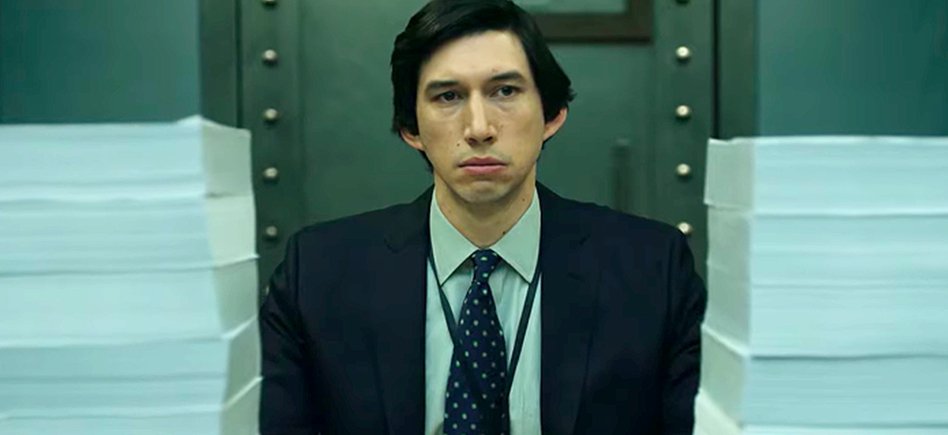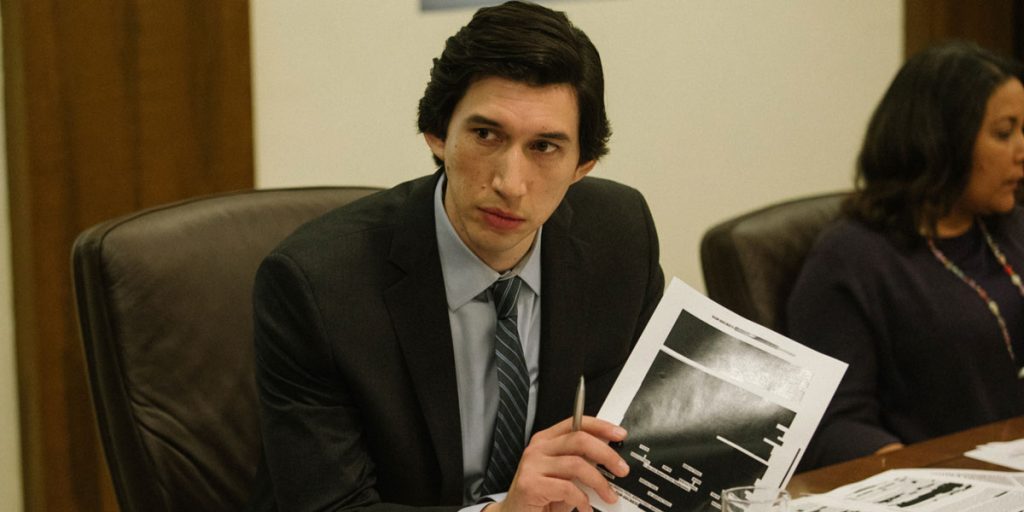Steve Z Burns’s The Report is the audio-visual evidence of how much we still need political-inquiry dramas.
In the wake of 2017 The Post success, Steve Z Burns’s The Report is here to make a statement. We need more political dramas on our screens. Inquiry movies – The Big Short way – turn out to be necessary inasmuch as they can explain otherwise unfathomable historical events. We get the chills in front of a 7,000-page institutional document and, at the same time, a newspaper article wouldn’t be able to grasp the complexity and humanity that surrounds its drafting. That’s what the movies are for. To remind you that the context is just as important as the content itself; that we needn’t plunge into an academic sleep-inducing document to be up to date. It’s essential to be informed about the reality of events, but it’s equally important to be engaged by it. And The Report serves the purpose.
The Report marks Amazon Prime Video’s debut in the political-inquiry genre, courageously parading an interest in politics. It’s the accurate and scrupulous screen adaptation of the Senate document that has been redacted by David Jones for several years in the aftermath of 9/11. The report’s purpose is to look into a document that has been destroyed by the CIA which was supposed to disclose the “enhanced interrogation procedures” used on Al Qaeda’s suspected affiliates after the terrorist attacks. Under this new interrogation method, we read “torture”: in fact, the movie title in the poster states “The Torture Report”.
The strikethrough hints at another fundamental and yet delicate theme voiced in the movie, which is the controversial relation between the Obama administration and the CIA. It’s a story of documentation censorship, protection and blaming the other. The protagonist is Jones, portrayed by majestic Adam Driver, who simply can fit into every role he’s given. The audience follows his inquiry from the privileged point of view of the close-up, and witnesses his whole career’s development, from his first dream job interview, to how he was appointed as director of the report, and its subsequent release.

From the first shots we already get the idea of the movie’s rhythm, dictated by the discipline and thoroughness that Jones puts into the job. His life comes to coincide with that very report. He neither sleeps nor has a private life other than work. We know nothing of him. The setting is aseptic and claustrophobic: everything happens in the basement of a State-owned building, with no windows and no chance for his discoveries to see the light of day. These dark long shots are infrequently interrupted by the contrast created by panoramic views of Jones jogging around Washington DC, who is shown in a way that makes him appear as if he were oppressed by the white high buildings.
Two narratives unfold in front of the audience: that of the redaction of the report, and the subsequent run-up to understand what really happened in the CIA’s “dark places” (interrogation cells in Guantanamo in the early 2000s). Alienated by a yellowish filter, the frames of basement torture move quickly before our eyes, following Jones’ discovery. The scenes are tough: CIA performed waterboarding and sleep deprivation techniques on the suspects, and these methods of torture are not spared to the audience. However, they are made quite bearable by both the awkward acting of the terrorists and by the interviewers’ forced farce. Voluntarily or not, the overall attempt to lighten the circumstances is outstandingly successful.
The Report is the document’s cinematographic replica, and not quite its extension. The only issue worth raising regards the movie’s lack of representation of the whole humanity spectrum that’s hidden behind these cold institutions. Being stiflingly set in either the Senate basement or the CIA’s dungeons, following David Jones at home and seeing what happened in his life beside his job would have satisfied the audience’s curiosity. For instance, it would have been good to find out about how his sentimental life was affected by his dedication to the report; whereas this matter is only hinted at once, in a casual sentence. Some passages leave the viewer in need of a breath of fresh air, in order not to lose the focus, and the two seconds we get of Jones jogging are not enough. It’s meticulous work, incredibly on the nose – but perhaps Burns could have loosened up his tie a bit, and left the narrative line roam in the personal territory that The Post already over-explored in the past.
Moreover, even Senator Feinstein, interpreted by Annette Bening, and Obama’s Chief of Staff McDonough, portrayed by the iconic Jon Hamm (whose character in this movie shows the same personality as Don Draper!) could have used some backstory. Their acting remains majestic, and is fundamental in the movie’s economy of narration. Their voices are extremely recognizable, and acclimatize the audience to the brutal content of this chapter of history. It feels like our parents are telling us this story, and this makes it more digestible.
The Report is a love letter to the genre. References to All the President’s Men, Spotlight and The Post are present with no need to be openly claimed. They are weaved in the film’s ethics. The viewer stands up from its comfortable cinema seat with a desperate thirst for truth. This means that the movie has pulled off its mission.
The Report premiered at the Sundance Film Festival and is now available worldwide on Amazon Prime Video.

